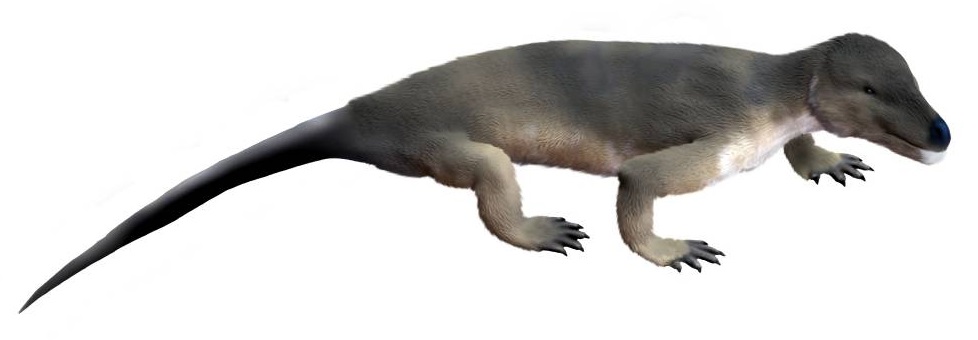Procynosuchus delaharpae
Name: Procynosuchus delaharpae [Delaharp's Before the dog croc]
When: Late Permian Period, about 253 million years ago
Where: Various sites in South Africa, Zambia, Germany, and Russia.
Claim to fame: Procynosuchus is the earliest well-known member of the cynodonts - mammals and their closer fossil relatives. Although first discovered in South Africa in the 1930s, specimens have been found in widespread localities. Procynosuchus demonstrates that cynodonts were around at the end of the Permian and survived the "Great Dying" at that period's end. Cynodonts were widespread during the Triassic and, in the Early Jurassic, gave rise to proper mammals. With few exceptions, cynodonts were small until the extinction at the end of the Cretaceous opened up the large-animal niche for their mammalian members.
Although Procynosuchus and other fossil cynodonts shared many evolved features with mammals, there are plenty of mammalian traits that it lacked. For example, the bones that in mammals contribute to the middle-ear and lining of the ear-drum, the malleus and ectotympanic, are still part of Procynosuchus' lower jaw, although highly specialized for hearing. Thus, Procynosuchus' ears were in its jaw. Procynosuchus' brain was very small compared to that of any mammal of similar size, and it still possessed a pineal eye in the roof of its skull, like living lizards do, functioning as a light-meter to help coordinate daily cycles. For fun, note that the pineal eye communicated with the brain through the parietal fontanelle, an opening in the top of the skull that in mammals closes shortly after birth. Oddly, the gene that promotes the closure of the fontanelle also promotes development of mammals' rich fur coat. Could the presence of the pineal eye indicate that Procynosuchus' coat, if it had one, was poorly developed?
Procynosuchus is unusual among cynodonts in having a relatively long tail that is compressed side to side. This, coupled with the fact that it retained the ancestral vertebrate pattern of undulating its trunk from side to side (as a lizard might), suggests that it could have been semi-aquatic.

Procynosuchus rhyton.
About the pieces: I enjoyed sculpting the head of Procynosuchus as a benchmark for the starting-point for cynodont evolution, a pathway that leads ultimately to proper mammals, and a nice intermediate stage between more distant mammal-relatives like Diictodon and proper mammals. In my reconstruction, Procynosuchus has fur. As I explain above, the real animal probably didn't have a beautiful mammalian coat, but it is at the base of the cynodonts - the point at which I and other paleo-artists start to become comfortable with the presence of fur. I have heard anecdotally that there exist coprolites (fossilized poop) from the Late Permian that clearly contain hairs. Definitely something back then was growing the stuff, and the early cynodonts were the most mammal-like creatures around at the time, making them likely candidates.
